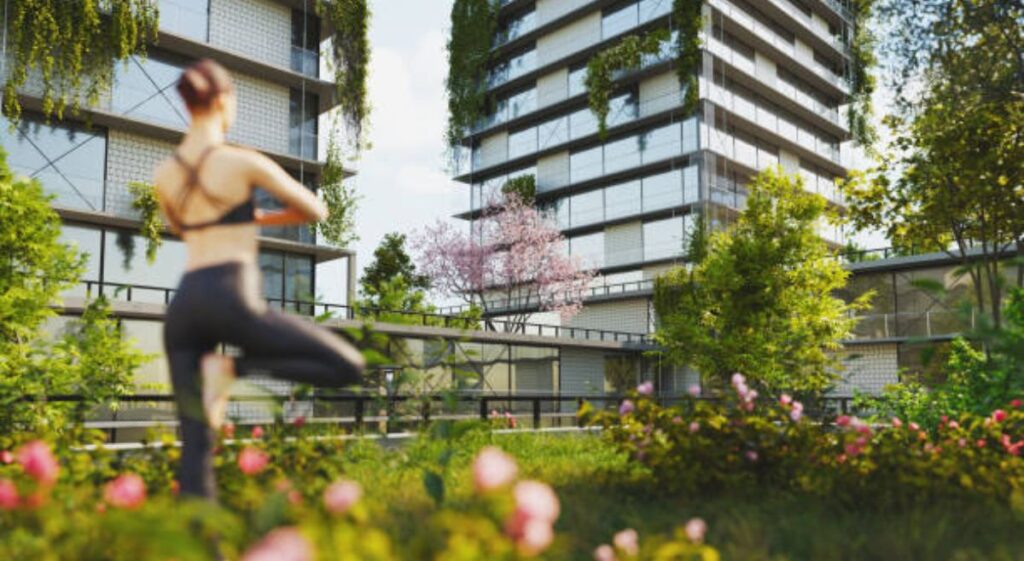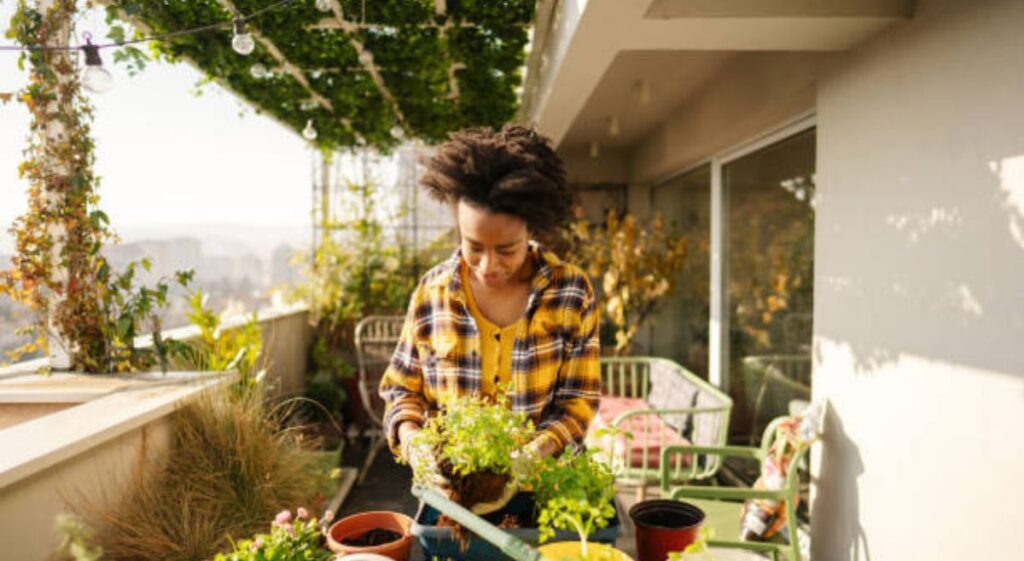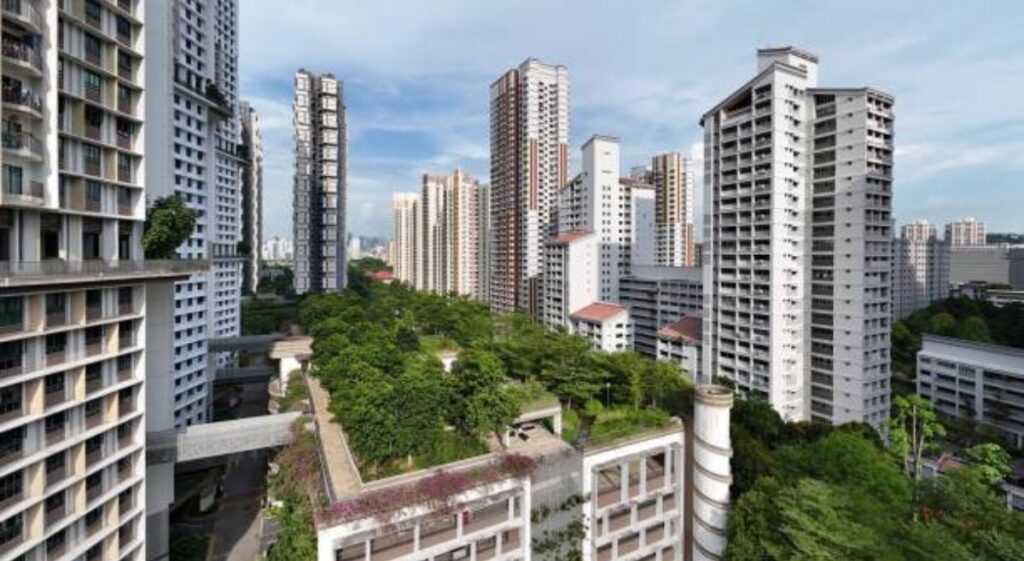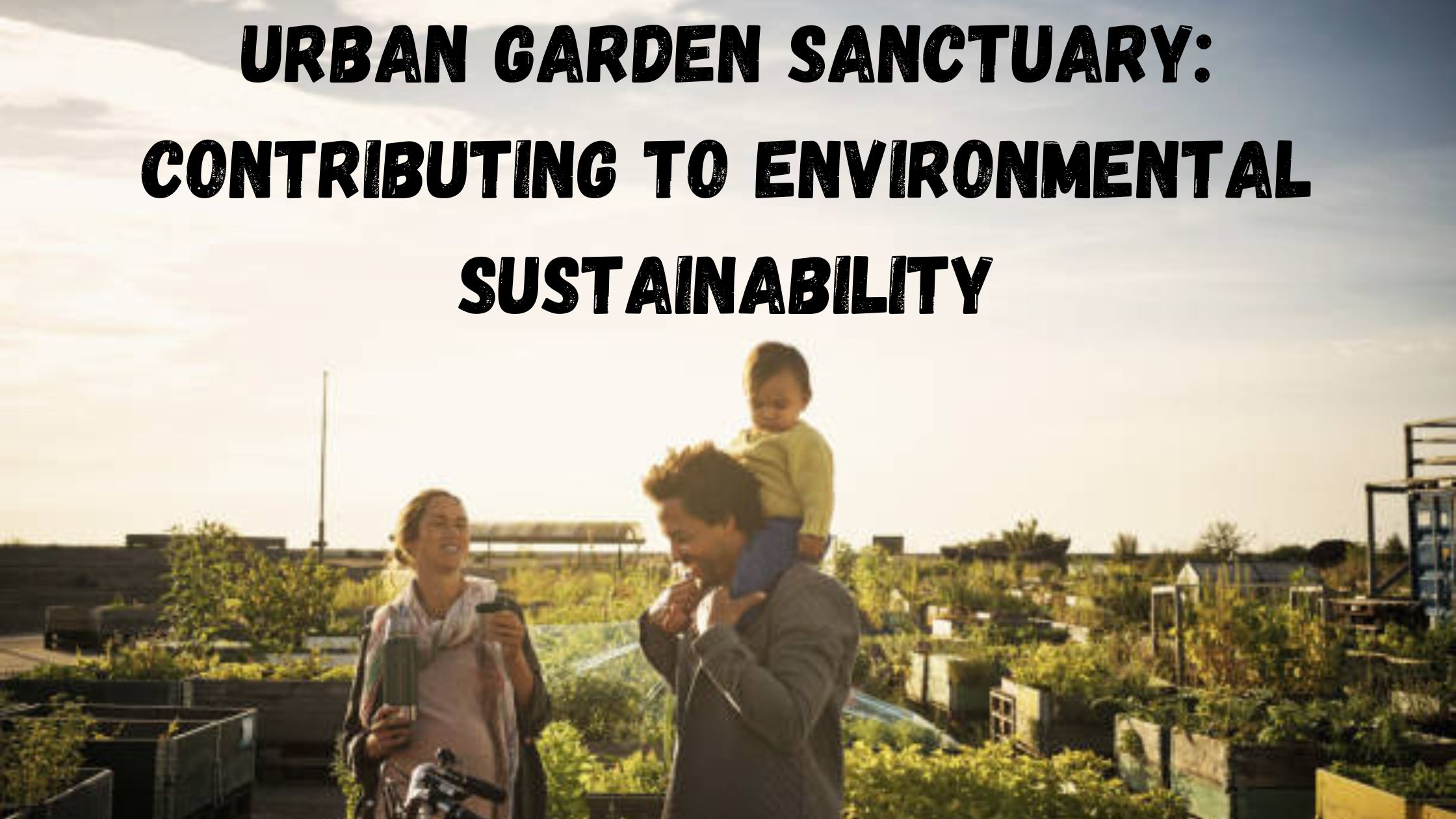Introduction
Urban Garden Sanctuary: Contributing to Environmental Sustainability

In today’s vibrant metropolitan environments, the necessity for verdant areas has never been more pronounced. As urban centers expand and concrete structures proliferate, the aspiration to cultivate a fragment of nature amidst the urban landscape intensifies. Urban gardening serves as a potent means of transforming drab concrete spaces into vibrant, verdant sanctuaries. Regardless of whether you possess a modest balcony, a rooftop, or merely a sunlit windowsill, you have the capacity to introduce the splendor and serenity of nature into your urban residence. Herein lies a step-by-step guide on how to establish your own urban garden sanctuary..
How does Urban Garden Sanctuary contribute to environmental sustainability?
An Urban Garden Sanctuary significantly impacts environmental sustainability through various practices:
1. Improving Air Quality:
- Plants absorb carbon dioxide and release oxygen, reducing air pollution.
- They trap dust and particulate matter, enhancing overall air quality.
- Contributes to healthier urban environments, reducing respiratory issues.
2. Promoting Biodiversity:
- Urban gardens create habitats for insects, birds, and small animals.
- Planting diverse plants, including native species, supports pollinators like bees and butterflies.
- Increased biodiversity strengthens ecosystems, creating a more resilient environment.
3. Reducing Urban Heat Island Effect:
- Vegetation provides shade and releases moisture through evapotranspiration.
- This cooling effect reduces the need for air conditioning, lowering energy consumption and greenhouse gas emissions.
4. Enhancing Water Management:
- Urban gardens absorb rainwater, reducing runoff and mitigating flood risk.
- Rain gardens and permeable surfaces contribute to better water management.
- Efficient water management reduces strain on urban drainage systems and prevents water pollution.
5. Supporting Local Food Production:
- Urban gardens can grow fruits, vegetables, and herbs, reducing food transportation over long distances.
- Local food production reduces carbon footprint and promotes food security.
6. Reducing Waste:
- Urban gardens encourage composting, turning organic waste into valuable fertilizer.
- Composting reduces waste sent to landfills and enriches the soil naturally.
7. Conserving Resources:
- Urban gardens incorporate sustainable practices like rainwater harvesting and drip irrigation.
- Renewable resources for garden structures reduce waste and promote eco-friendly materials.
- These practices conserve water, energy, and resources, contributing to sustainable urban living.
8. Educating and Engaging the Community:
- Urban gardens serve as educational platforms for sustainability, teaching gardening, composting, and environmental stewardship.
- They foster a sense of community, bringing people together for a common goal.
- Increased awareness and community engagement lead to more sustainable behaviors and practices, benefiting the broader environment.
9. Sequestering Carbon:
- Plants in urban gardens sequester carbon from the atmosphere, helping mitigate climate change.
- Collectively, urban gardens contribute to reducing atmospheric carbon levels, making a significant impact over time.
An Urban Garden Sanctuary not only enhances urban life but also plays a vital role in promoting environmental sustainability on both a local and global scale by integrating these practices.
What are the challenges of Urban Garden Sanctuary and how can I overcome them?
Creating an urban garden sanctuary within your living space can be a rewarding experience, but it also presents unique challenges. To guide you through this endeavor, here’s a structured overview of common challenges and effective strategies to address them:

1. Space Constraints:
- Challenge: Urban areas often have limited space, making it difficult to create a sprawling garden.
- Solution: Maximize vertical space with wall-mounted planters, trellises, and hanging baskets. Choose compact, multi-functional plants like dwarf varieties or plants with dual purposes, such as edible flowers. Consider container gardening for small balconies or patios.
2. Soil Quality Issues:
- Challenge: Urban areas often have poor or contaminated soil, affecting plant growth.
- Solution: Use raised beds filled with high-quality soil or containers with a good potting mix. Incorporate compost and organic matter to enrich the soil. Consider soil testing and amending accordingly to balance pH and nutrient levels.
3. Limited Sunlight Access:
- Challenge: Buildings and structures can block sunlight, creating shaded areas unsuitable for all plants.
- Solution: Choose shade-tolerant plants like ferns, hostas, and certain herbs. Reflect light into shaded areas with mirrors or light-colored surfaces. Position sun-loving plants in the brightest spots and use artificial grow lights if necessary.
4. Water Management Concerns:
- Challenge: Urban gardens may face issues with water availability or drainage problems.
- Solution: Implement water-saving techniques like drip irrigation systems or self-watering planters. Collect rainwater using barrels or install a rain garden. Ensure proper drainage by using gravel or sand at the bottom of containers or raised beds.
5. Pest and Pollution Control:
- Challenge: Urban environments can attract pests and have higher pollution levels, impacting plant health.
- Solution: Use organic pest control methods like neem oil or insecticidal soap. Introduce beneficial insects like ladybugs. Choose pollution-resistant plants and regularly wash leaves to remove pollutants. Create a barrier with netting or row covers to protect plants from pests.
6. Time Constraints and Maintenance:
- Challenge: Busy urban lifestyles often make it difficult to dedicate time to garden maintenance.
- Solution: Opt for low-maintenance plants and automated watering systems. Consider a garden that aligns with your lifestyle, like a succulent garden that requires minimal upkeep. Schedule short, manageable gardening tasks to stay on top of maintenance without feeling overwhelmed.
7. Noise and Privacy Concerns:
- Challenge: Urban areas can be noisy, and gardens may lack privacy due to proximity to neighbors.
- Solution: Create privacy and reduce noise with tall plants, shrubs, or trellises covered in vines. Use outdoor fabrics or screens to section off areas. Incorporate water features like fountains to mask noise with soothing sounds.
8. Urban Wildlife Presence:
- Challenge: Animals like birds, squirrels, and rodents can disrupt your garden.
- Solution: Use protective netting or cages around vulnerable plants. Choose wildlife-resistant plants and avoid feeding animals. Create a balanced ecosystem by attracting natural predators to keep the wildlife in check.
By understanding and addressing these challenges, you can successfully create a thriving urban garden sanctuary amidst the bustling city life, providing you with a peaceful retreat and a touch of nature in your urban oasis.
What are the best plants and vegetable for a small Urban Garden Sanctuary?

In the process of establishing a diminutive urban garden sanctuary, the selection of plants and vegetables compatible with confined spaces is of paramount importance, ensuring their ability to flourish in containers or compact garden beds. Herein, we present some of the most suitable options:
Enliven Your Small Urban Garden Sanctuary with Vibrant Plants and Vegetables
Plants for a Flourishing Sanctuary:
1. Herbs:
- Basil: An easy-to-grow and versatile herb, perfect for adding freshness to culinary dishes.
- Mint: Thrives in containers, providing refreshing flavors to beverages and salads.
- Thyme: A hardy and drought-tolerant herb that requires minimal space.
- Parsley: A compact herb that thrives in small pots, perfect for garnishes.
- Chives: Great for small spaces, chives can be regularly snipped for cooking.
2. Succulents:
- Aloe Vera: A low-maintenance plant with medicinal properties.
- Echeveria: Compact and visually appealing, ideal for small containers.
- Jade Plant: A slow-growing succulent that adds greenery without occupying much space.
- Sedum: Available in various shapes and colors, perfect for rock gardens or small pots.
3. Flowers:
- Marigolds: Bright and cheerful, marigolds are easy to grow and deter pests.
- Pansies: Compact flowers that bring a splash of color and thrive in cool weather.
- Petunias: These flowering plants do well in containers and hanging baskets.
- Lavender: Not only beautiful, but lavender also adds fragrance to your garden.
4. Climbing Plants:
- Ivy: A classic choice for vertical gardens, adding greenery to walls or trellises.
- Morning Glory: A fast-growing vine that produces vibrant, trumpet-shaped flowers.
- Clematis: A flowering vine that adds height and color to your garden sanctuary.
Vegetables for a Bountiful Harvest:
1. Leafy Greens:
- Lettuce: Grows quickly and can be harvested multiple times.
- Spinach: Thrives in small spaces and provides nutritious leaves.
- Kale: A nutrient-dense green that grows well in containers.
- Arugula: A peppery green that is easy to grow and ideal for small spaces.
2. Root Vegetables:
- Radishes: Fast-growing and space-efficient, radishes are perfect for small gardens.
- Carrots: Choose short varieties that thrive in containers or shallow soil.
- Beets: Compact and colorful, beets can be grown for both roots and greens.
3. Fruiting Vegetables:
- Cherry Tomatoes: These small tomatoes grow well in containers and produce abundant fruit.
- Peppers: Both hot and sweet peppers thrive in pots and small garden beds.
- Cucumbers: Choose bush varieties that are more compact and suitable for small spaces.
- Eggplants: Compact varieties like ‘Little Finger’ are perfect for container gardening.
4. Beans and Peas:
- Bush Beans: Unlike pole beans, bush beans don’t require much vertical space and produce well in small gardens.
- Snap Peas: These can be grown in containers and provide both pods and shoots for eating.
5. Herbs with Dual Uses:
- Rosemary: A fragrant herb that can also be used in cooking.
- Oregano: A hardy herb that adds flavor to dishes and thrives in small spaces.
Maximizing Your Small Urban Garden:
- Vertical Gardening: Use trellises, hanging baskets, and wall-mounted planters to make the most of vertical space.
- Companion Planting: Combine plants that grow well together, such as tomatoes and basil, to maximize space and productivity.
- Succession Planting: Plant crops in succession to ensure continuous harvests throughout the growing season.
- Container Gardening: Choose pots and containers that suit your space, ensuring they have proper drainage and are the right size for your plants.
By selecting these space-efficient plants and vegetables, you can create a thriving Urban Garden Sanctuary even in the smallest of spaces, enjoying the benefits of fresh produce, vibrant flowers, and soothing greenery.
Conclusion
The creation of an urban garden sanctuary presents a rewarding opportunity to integrate nature into one’s daily life, particularly within bustling urban environments. Through the implementation of specific steps, any concrete space can be transformed into a verdant and flourishing retreat that contributes to both personal well-being and the preservation of the environment. Regardless of one’s level of gardening expertise, urban gardening offers boundless possibilities for the formation of a personal oasis nestled within the heart of the urban landscape.
References
- American Society for Horticultural Science (2020): Urban gardening’s environmental impact in small spaces.
- Royal Horticultural Society (2019): Urban gardening benefits.
- National Geographic (2021): Urban gardens combat climate change.
- Environmental Protection Agency (2021): Urban green spaces’ benefits.
- Better Homes & Gardens (2021): Sustainable urban gardening practices.
